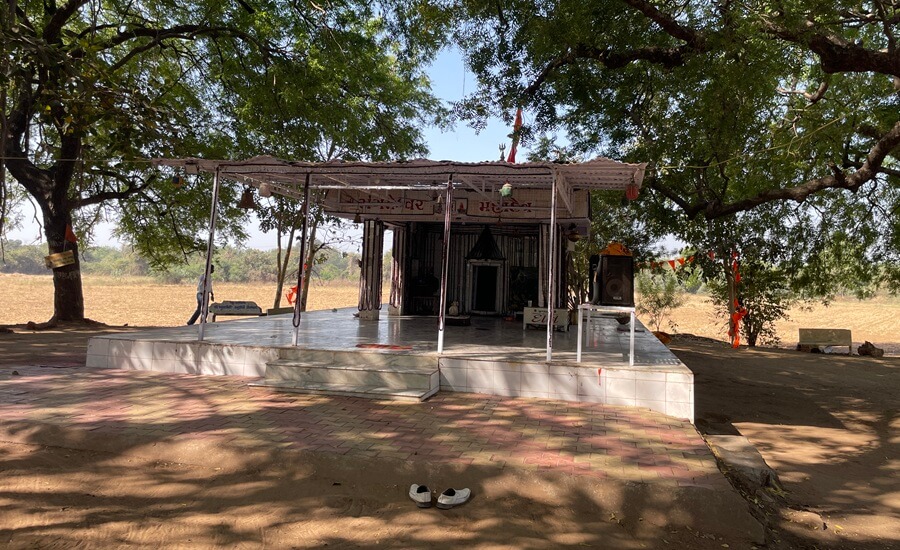
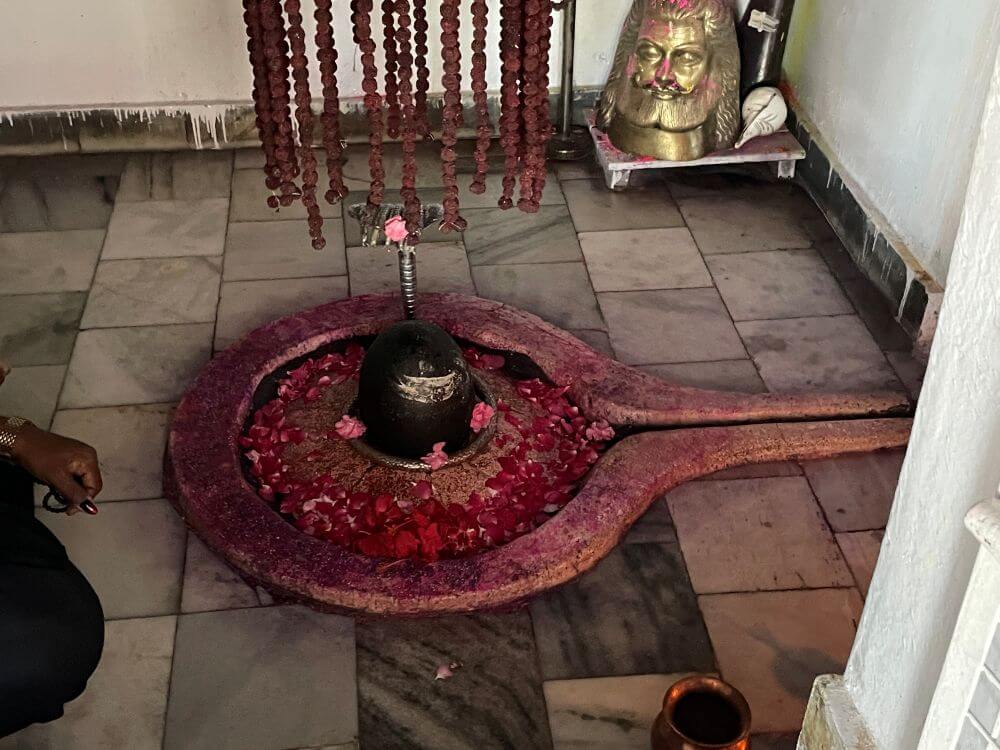
Sangameshwar Mahadev Shivdham is situated near the confluence of two rivers, Dev and Dhadhar, in a scenic natural environment. Known as ‘Baniya Sangam,’ this temple is said to be approximately 550 years old. Devotees believe that the self-manifested (Swayambhu) Shivling here is awakened and fulfills all wishes. As a result, devotees from Gujarat as well as Maharashtra, Madhya Pradesh and Rajasthan visit to have darshan of Lord Shiv. A unique feature of this temple is that during Mahashivratri, it is decorated with Rudraksha garlands from the spire down to the lower walls.
The legend associated with this temple states that the Mahakali temple at Pavagad, about 57 km from Dabhoi, is considered one of the 51 Shakti Peethas of the Goddess. 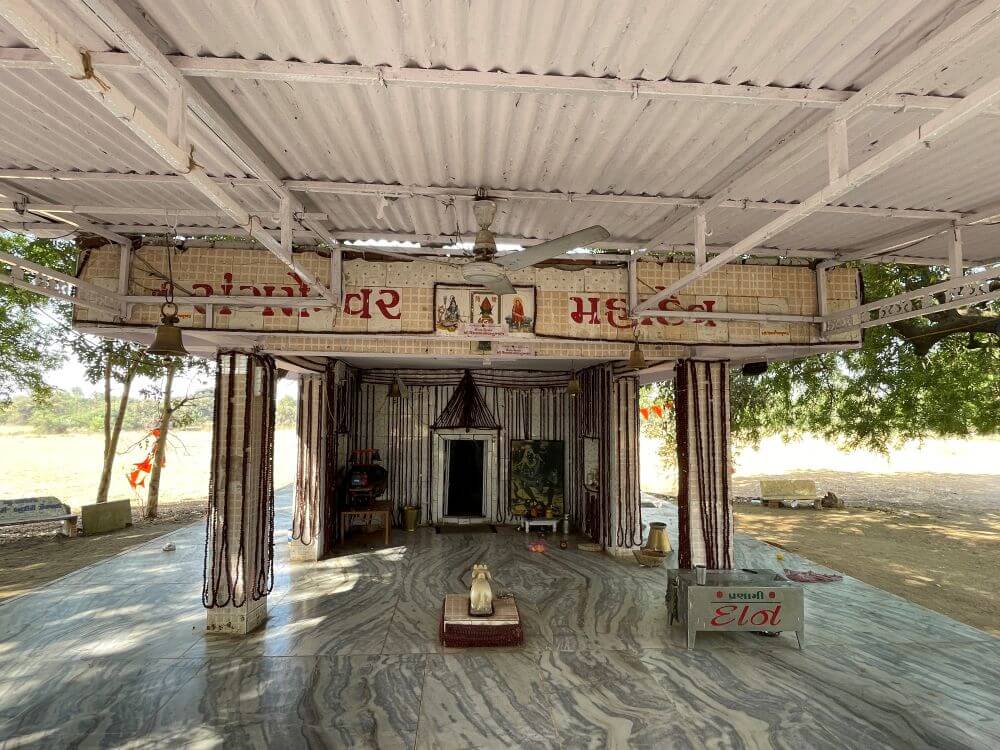 In the 15th century, the region was ruled by the Patai Rawal dynasty, ardent devotees of Mahakali. The story goes that Mahakali herself would come and participate in the Garba dance during the Navratri festival at the temple. Jayasingh was the last king of this dynasty. During one Navratri festival, he looked at Mahakali disrespectfully while she was dancing. Enraged, she cursed both him and his kingdom, causing the king to contract leprosy. Seeking forgiveness, he prayed to Mahakali, who instructed him to bathe at the confluence of the Dev and Dhadhar rivers and worship the Shivling present there.
In the 15th century, the region was ruled by the Patai Rawal dynasty, ardent devotees of Mahakali. The story goes that Mahakali herself would come and participate in the Garba dance during the Navratri festival at the temple. Jayasingh was the last king of this dynasty. During one Navratri festival, he looked at Mahakali disrespectfully while she was dancing. Enraged, she cursed both him and his kingdom, causing the king to contract leprosy. Seeking forgiveness, he prayed to Mahakali, who instructed him to bathe at the confluence of the Dev and Dhadhar rivers and worship the Shivling present there.
Following her advice, the king bathed at the confluence and worshipped the Shivling, which cured his leprosy. 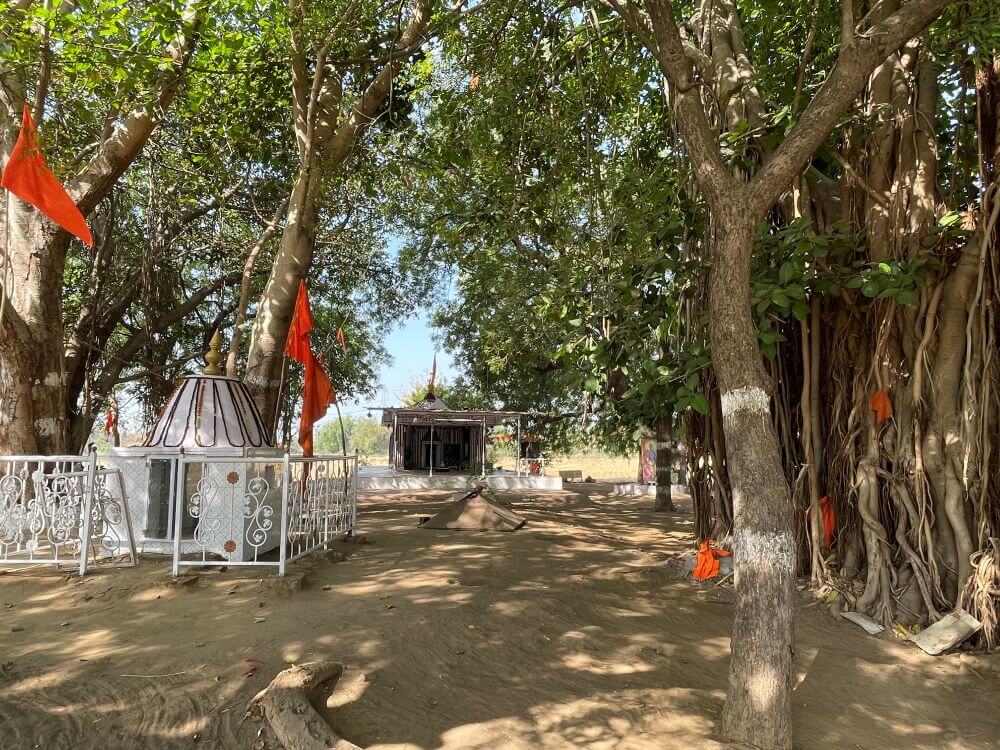 However, in 1484 AD, Sultan Mahmud Begada of Gujarat attacked Pavagadh. As a result of Mahakali’s curse, Jayasingh’s kingdom was defeated and he became the last ruler of the Patai Rawal dynasty at Pavagadh.
However, in 1484 AD, Sultan Mahmud Begada of Gujarat attacked Pavagadh. As a result of Mahakali’s curse, Jayasingh’s kingdom was defeated and he became the last ruler of the Patai Rawal dynasty at Pavagadh.
This area was once a dense forest and it is believed that many sages performed penance here. Even today, the temple is nestled in a remote spot amidst fields and forested land. Because of its location at the confluence (sangam), the deity here is called Sangameshwar Mahadev.
The modest temple complex is shaded by trees, with a large Yagna Kund (sacrificial fire pit) located near a banyan tree under a metal shed. Religious rituals and Yagnas are conducted here during festivals. Close by is a shrine of Sai Baba, where a community meal (Bhandara) is organized every Thursday.
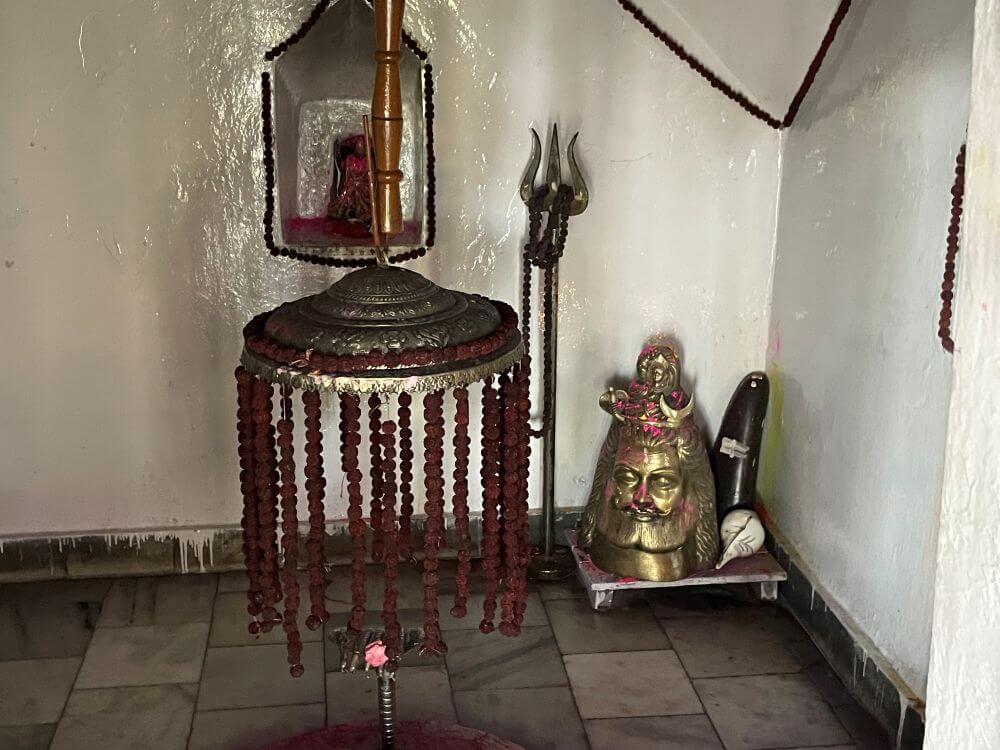 The temple consists of a metal-roofed shed raised on a high platform, a spacious sabhamandap (assembly hall) and a garbhagriha (sanctum sanctorum). The platform is paved with marble tiles and the temple walls and pillars are lined with marble tiles as well. The sanctum features a domed spire.
The temple consists of a metal-roofed shed raised on a high platform, a spacious sabhamandap (assembly hall) and a garbhagriha (sanctum sanctorum). The platform is paved with marble tiles and the temple walls and pillars are lined with marble tiles as well. The sanctum features a domed spire.
In the open assembly hall, there is a marble statue of Nandi placed on a pedestal, with a tortoise (Kurma) figure in front. A large mural of Lord Shiv is painted on the wall beside the sanctum entrance. The entrance is small, requiring visitors to bow down to enter. Only one person at a time can enter the sanctum.
At the center of the sanctum, there is an oval-shaped Shivling on a large pedestal, sheltered by a cobra (Naag Chhatra). 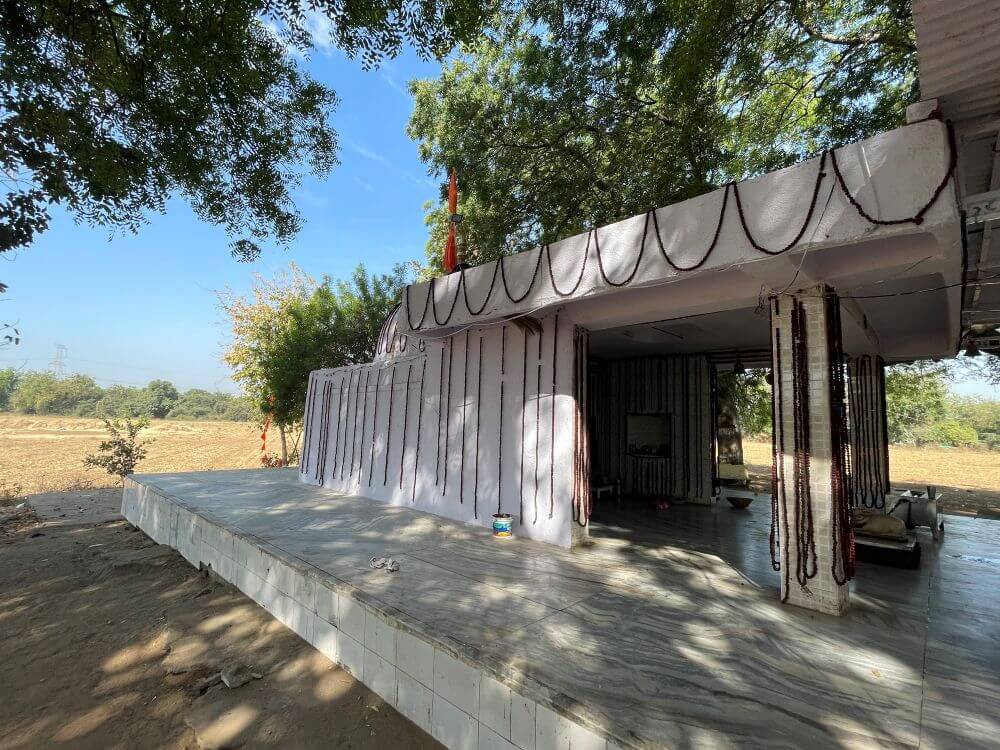 A silver canopy surrounded by Rudraksha garlands adorns the top. Inside the sanctum, there are also idols of Lord Ganesha and Lord Hanuman. Rudraksha garlands are hung throughout the outer walls and spire of the temple.
A silver canopy surrounded by Rudraksha garlands adorns the top. Inside the sanctum, there are also idols of Lord Ganesha and Lord Hanuman. Rudraksha garlands are hung throughout the outer walls and spire of the temple.
Nearby, under a tree, are two ancient Shivlings, also covered with cobra hoods, along with a shrine of Shani Dev. Devotees believe that the heartfelt worship at Sangameshwar Mahadev fulfills all their desires. Hence, many devotees visit, especially on Mondays, Thursdays, Saturdays and Chaturdashi nights. On Mahashivratri, the temple is filled with devotees and Mahaprasad is distributed. Bhang is also offered as prasadam. During the holy Shravan month, hundreds of devotees come, particularly on the first and last Mondays, with many arriving carrying holy water in a Kanwar (Kavad).



